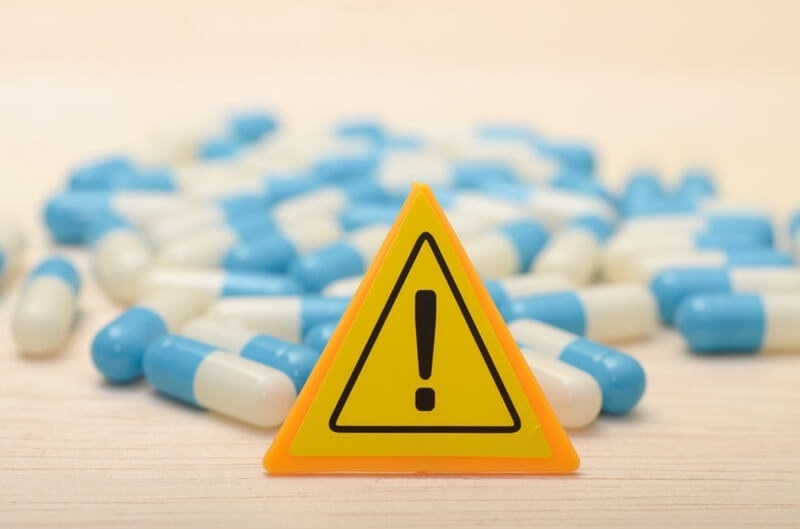
Taking several medications can be a natural aspect of contemporary life, particularly in the United States, where millions of adults take prescription medication, over-the-counter medication, and dietary supplements each day. Although these medications are typically necessary and useful, their interaction can have adverse effects if not fully appreciated. That is why it is a good idea to know about drug interactions—why they occur, why they are important, and how you can avoid them.
Today, we will go through the basics of drug interactions and why they are crucial to drug safety and patient well-being, learn how to identify safe combinations, and include useful advice on the prevention of health dangers from interactions.
Medication interactions are where two or more medications, supplements, or even foods and liquids affect how each other behave in the body. They can change how drugs function by reducing their effect or increasing their toxicity.
There are many types of medication interactions.
Understanding these categories is the key to safer drugs. Understanding how combinations will interact in your body enables you to manage your patient care and steer clear of unexpected complications.

The typical adult over 60 in the United States takes more than five medications a day. With every extra prescription, the risk of negative drug interactions grows. Interactions can lead to:
Those effects are not merely disruptive but lethal. Drug safety and active health protection measures receive the highest priority from healthcare systems due to this.
In the patient care context, learning potential safe combinations prior to starting a new drug is appreciated. That makes you and your doctor make intelligent choices and prevent avoidable harm.
Let's take a look at some examples from real life that show us why it is necessary to pay attention to drug interactions.
These incidents are examples of how even common products can lead to interaction risks. Their avoidance is a part of drug safety along with patient management, especially in elderly and chronically ill patients.
There are a number of ways in which American healthcare professionals make drugs safer and reduce drug interactions.
This proactive protection is part of an overall effort to push patient care ahead by preventing unnecessary medication-related harm. It is health prevention—preventing a problem before it happens.
While your pharmacist and physician play a crucial role in drug safety, you also have a say. Below are some guidelines to evaluate safe drug combinations and prevent the hazard of interaction.
Each one of them reinforces your position in patient care and lowers the risk of adverse effects.
Daily habits affect drug interactions in most individuals. Diet, alcohol consumption, caffeine, and even smoking can alter how drugs act in your body. Understanding these interaction risks is an integral part of health prevention.
Discuss your lifestyle and diet with your healthcare practitioner to help ensure that your medication and lifestyle are healthy combinations that foster your well-being and are in compliance with the criteria for safe drugs.
Pharmacists are the leaders of medication safety and patient wellness. They are specifically equipped to prevent and detect drug interactions. When you fill a prescription, they scan it automatically against your other medications for risk of interaction.
Building a good relationship with your pharmacist is an active step in your health prevention plan and the security of your health.
Some populations are at higher risk of interaction and require special care for drug safety.
For the former, monitoring, regular checking on drugs, and effective communication with health care providers are important factors in patient care and the avoidance of health issues.
Being conscious of the signs of probable drug interactions can help you respond in time and prevent harm.
If you have these effects, seek medical attention immediately. Early intervention and detection are essential to drug safety and can rescue your entire patient care program from disturbance.
Developing an individualized health prevention plan can go a great distance in minimizing your interaction risks.
By instituting drug safety as a process rather than an occasional spot check, you strengthen your patient care and your treatment outcomes.
The American medical industry is gradually adopting the development of guidelines and technology that facilitate safe pairings. From computer prescription systems to artificial intelligence utilized to gauge the risk of interactions, these innovations are transforming patient care.
No level of technology can replace human responsibility, though. Remaining vigilant, asking questions, and offering correct information regarding your medications remain the foundations of drug safety and disease prevention.
Medication interactions can be complex, but understanding them is essential for your health. Whether you’re managing multiple prescriptions, using over-the-counter remedies, or taking supplements, every product carries the potential for interaction risks.
By working closely with your health care team, taking all of your prescribed medications at one pharmacy, and taking an active role in preventing harm, safe combinations can be ensured to prevent you from being harmed. In this manner, drug safety is enhanced, patient care is enhanced, and you are better and less complicated with greater confidence in your care. It is recommended to confirm the information in this article with a licensed medical practitioner before proceeding to believe it or act on it, as the information on the internet changes daily.
This content was created by AI